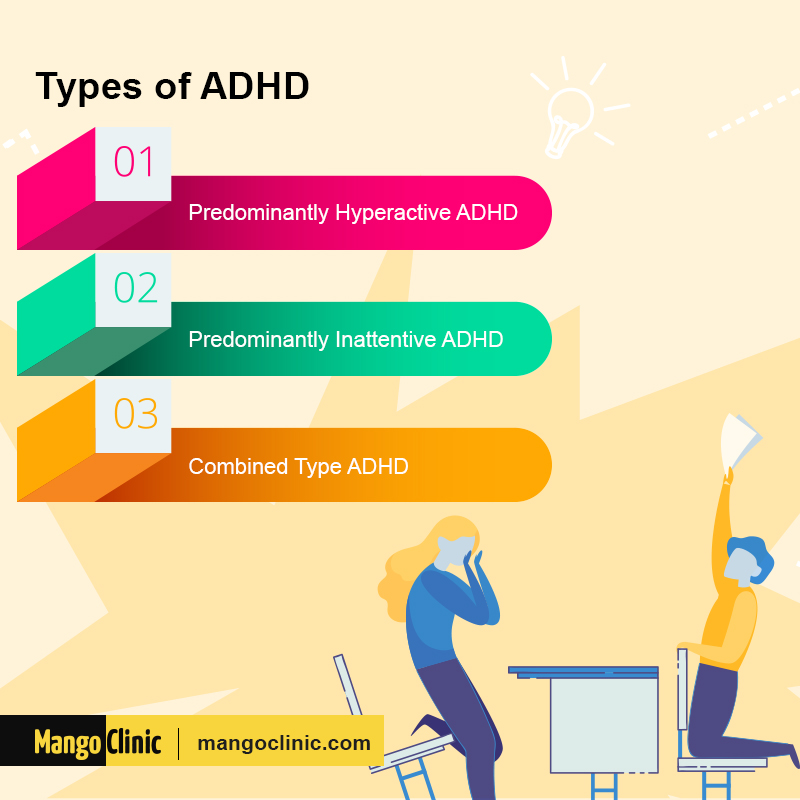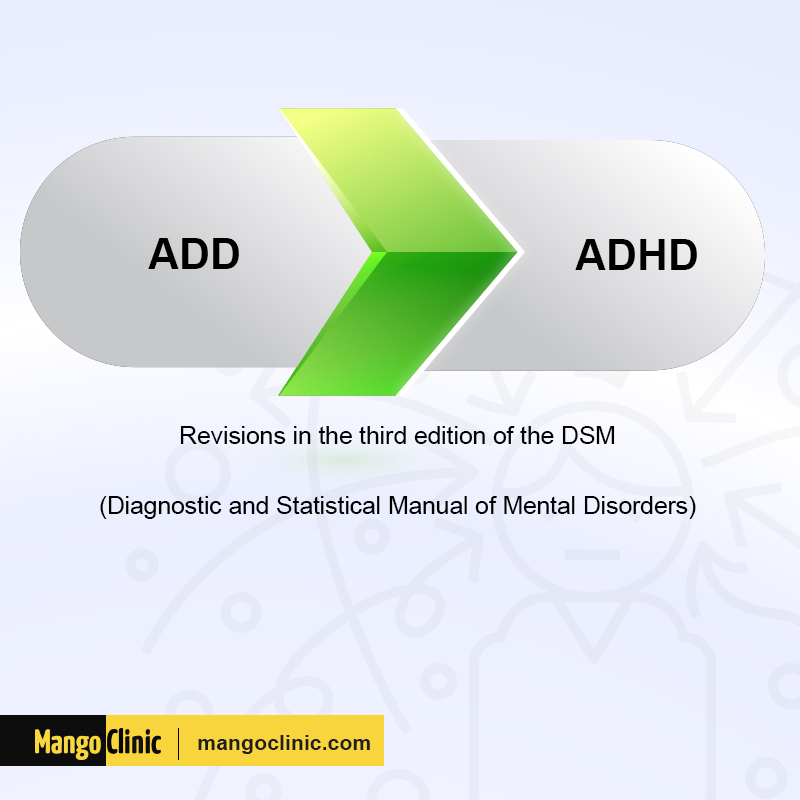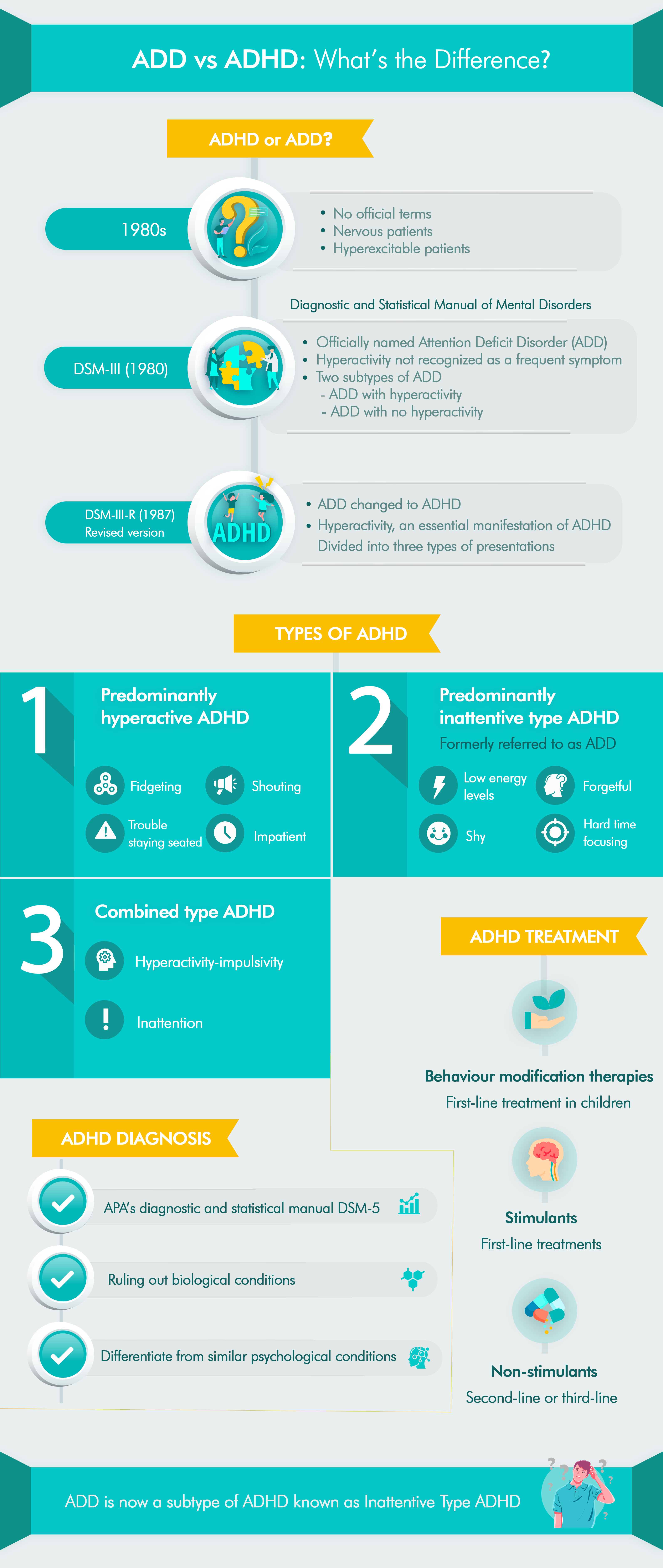ADD vs ADHD: What’s the Difference?
You may have heard people using the terms ADD or ADHD from time to time. However, understanding what each of the words means is difficult since people use them interchangeably. In most cases, people use the terms to mean the same thing, which is incorrect. However, to understand ADD vs ADHD difference, it is essential to analyze these terms further.
Click the button below to get professional ADD/ADHD treatment!
Table of Contents
ADD Vs ADHD
As mentioned above, many people use the terms to specify a particular condition. Here is a brief history lesson to break ADD and ADHD apart and help you better understand the terms. In the 1800s, medical practitioners had not come up with any of the two terms and referred to patients exhibiting their symptoms as nervous or hyperexcitable.
This changed when the Diagnostic and Statistical Manual of Mental Disorders, known as the DSM, published its third edition. The official name for this condition is attention deficit disorder (ADD). In this version, the DSM did not consider hyperactivity as a frequent symptom. Two subtypes of ADD were also recognized. The two were ADD with no hyperactivity and ADD with hyperactivity. Revisions in the third edition of the DSM changed the term ADD to attention deficit hyperactivity disorder (ADHD). This change considered hyperactivity as an essential manifestation of ADHD. ADHD was also divided further into the three types of presentations known today.
Types of ADHD
1. Predominantly Hyperactive ADHD
A need for constant movement characterizes this type of ADHD. Individuals diagnosed with predominantly hyperactive ADHD fidget often, run around excessively, and have trouble staying seated at a specific position. Therefore, identifying individuals with this type of ADHD is easy and they should exhibit six of the following symptoms:
- Shouting out answers
- Squirming
- Always moving around
- Impatience
- Climbing or running around inappropriately
- Excessive fidgeting
- Talking continuously
- Constant interruptions while conversing
- Trouble playing quietly
Click the button below and get treated for ADD/ADHD effectively!
2. Predominantly Inattentive ADHD
Predominantly inattentive type ADHD, formerly referred to as ADD, is characterized by low energy levels, and people diagnosed with it are often considered shy. This type of ADHD presents itself differently compared to the other two. Individuals diagnosed with ADD are forgetful and have a hard time focusing. It is vital to note that a health practitioner can only diagnose you with ADD if you exhibit six of the symptoms listed below. These symptoms are:
- Laziness
- Poor listening skills
- Forgetfulness
- The reluctance in engaging in activities that take long periods
- Difficulty in planning for tasks
- Careless mistakes
- The individual does not follow instructions
- Disorganized
- The trouble with mental tasks such as homework
- Difficulty sustaining attention

3. Combined Type ADHD
Combined type ADHD presents itself when an individual struggles with both hyperactivity, impulsivity, and inattention. Therefore, diagnosing a combined type of ADHD is as simple as identifying common symptoms from predominantly inattentive and predominantly hyperactive ADHD. However, each patient should exhibit five or more symptoms of this other ADHD classification as a combined type of ADHD patient.
ADHD Diagnosis
Diagnosing if you, your child, or your relative has ADHD is a daunting task. The reason behind this is the several steps involved in the process unique to each type of ADHD. Other biological and psychological conditions can also exhibit symptoms like those of ADHD. Therefore, your doctor should use various sources such as guidelines set by the APA’s diagnostic and statistical manual and the fifth edition of the DSM to help diagnose ADHD in patients.
Your medical practitioner should also ensure they thoroughly research the patient’s history and use checklists to help rate ADHD symptoms. Doing this ensures that the healthcare professional rules out any illnesses that present similar symptoms and help identify symptoms that can adversely affect the patient’s development. Note that ADHD symptoms can easily be confused in adults since they present themselves in unique ways. For example, hyperactive behavior in adults can easily be mistaken for an urge to wear others out or seek attention.
ADHD Treatment
Medication is vital when treating ADHD Patients. Therefore, finding the right medicine to treat this condition is essential. Medical practitioners can choose to prescribe central nervous system stimulants or non-stimulants. Doctors use non-stimulants treatment when stimulants fail to treat ADHD or the drugs have adverse side effects on the patient. When treating ADHD, especially in children, it is vital to consider other treatment options such as therapies to adjust behavior before considering medication. Constant monitoring and follow-ups will also help streamline the treatment process.
Click the button below to get ADHD treatment from skilled mental health professionals!
People Also Ask
Q1: How common is ADHD?
Ans: As per the statistics 8.4% of children and 2.5% of adults have ADHD and it is more common among girls and boys.
Q2: Is ADHD a disability or mental illness?
Ans: Impulsivity, hyperactivity, inattention are three main symptoms of ADHD. All of these symptoms are responsible for impacting thinking, behavior, and mood. These are the reasons ADHD meets the criteria for mental illness.
Q3: Does ADHD qualify for disability?
Ans: Social Security Disability (SSD) payments can be received by adults with severe symptoms of ADHD. If you feel that severe symptoms of ADHD have not let you continue your job or working in any capacity, you may be eligible.
Q4: What causes ADHD?
Ans: Premature birth, blood relatives with ADHD, maternal drug use, exposure to environmental toxins are among common causes of ADD.
Q5: What happens if ADHD is left untreated?
Ans: If untreated ADHD can lead to problems with emotional health, education, social relationships, self-esteem, and employment.

Conclusion
It is safe to say that using the term ADD to refer to general attention deficit hyperactivity disorder is now outdated and incorrect. This is because ADD falls under the subtypes of ADHD. That said, it is essential to ensure that you contact or see a medical practitioner if you notice some of the symptoms of ADHD mentioned above. Doing this is vital since early intervention can mitigate the effects of ADHD significantly.
Contact us at Mango Clinic for ADHD treatment or click the banner below to book your appointment.






